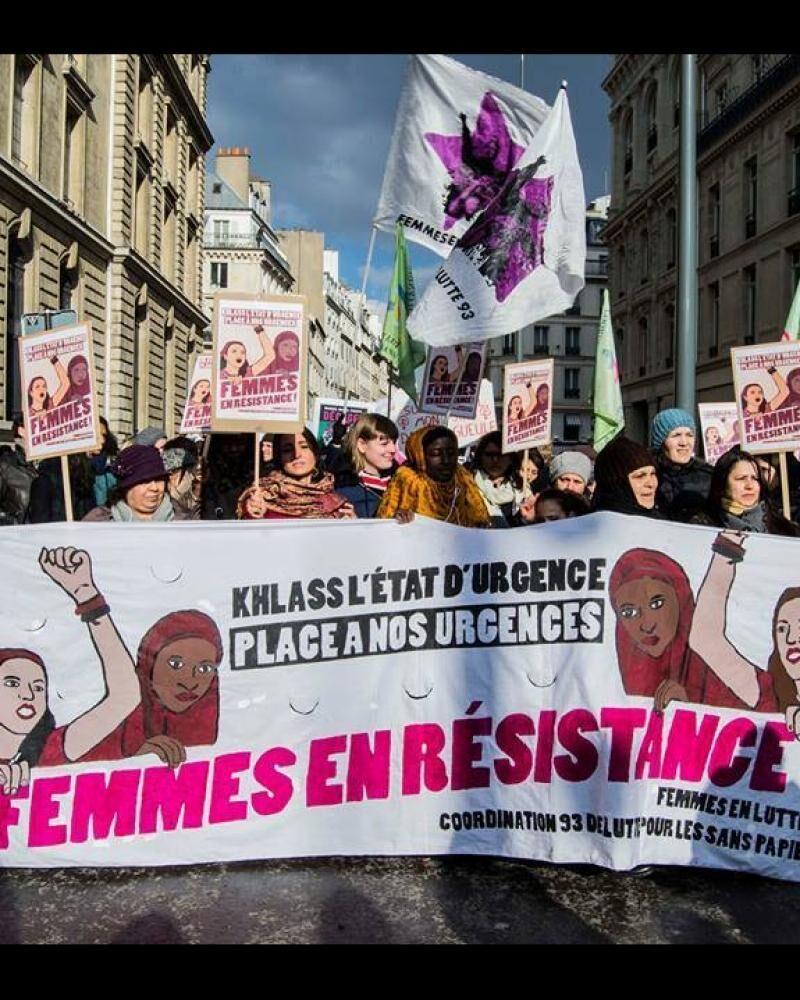Top Crop and Voile: The same fight?<
For the past few days, the web and the media have been panicking following statements about President Emmanuel Macron's crop top. However, it is the logical continuation of a policy that closely controls women's clothing.
The recent controversy over the crop top seems anecdotal in a country that has popularized the mini-skirt and where topless tanning is allowed. Especially since France has distinguished itself in recent decades by its debates and its laws on the wearing of the veil by Muslim women. These controversies are fueled in the name of equality between women and men, as well as the right of women to dispose of their bodies freely . However, it is the proponents of this same discourse when it comes to the veil who question the right of women to wear any garment deemed too provocative. Feminists against the veil talk about hypocrisy. However, everything indicates that there is a link between these two subjects. To what extent have the debates on the veil led to those on the crop top?

Republican attire required
In 2004, the first law on the Islamic veil was passed in France. This ban on wearing the veil at school comes after more than a decade of controversy. Headteachers and teachers, supported by a group of politicians, send young girls out of school who refuse to remove their veils. The principle invoked is that of the secularism of public establishments. But if the veil gets all the attention among the various ostentatious religious signs, it is because it is interpreted as submission to Muslim men . In this sense the problem is not only the supposed religious proselytism, but the inadequacy of the values of gender equality displayed by the Republic.
Shortly after, this problematic view of the veil was confirmed by a new law which this time prohibited the wearing of the full veil in public spaces . The public authorities are concerned about the appearance in France of this veil which covers almost the entire face. At the outset, questions of internal security are mentioned by the deputy who proposes the banning of this veil. However, when the subject was taken up by then President Nicolas Sarkozy, he declared that it was “not a religious problem, [but] of the freedom and dignity of women”. His government then opened a debate on national identity and the veil is precisely not part of it. Thus, without being named, the obligation to have a certain appearance in the public space is outlined in opposition to the veil.
A matter of state
After these cases, the veil never really leaves the debate again. Every public appearance of a veiled woman, whether at the beach or on a game show, is associated with the terrorist threat. This is why Emmanuel Macron's government's fight against terrorism is reflected in a set of proposals to restrict the access of veiled women to certain places and activities. France therefore becomes one of the countries in the world that legislates the most on women's clothing . Despite criticism from various organizations such as the UN, the country defends itself against any attack on freedoms in the name of female emancipation.
The feminist argument put forward by successive governments is supported by feminist groups. The former president of Neither Putes, nor submitted, Fadela Amara declares in particular “The current debate must lead to a law which protects women. I am in favor of a total ban on the burqa.” However, the main effect of these bans is to fuel an ongoing debate on the veil, without allowing the main stakeholders to express themselves. As sociologist Fatiha Ajbli notes in an AJ+ video, it is a form of total objectification of veiled women. They are reduced to a sign of clothing, itself reduced to an object of public debate. From then on, the door is open to talk about women's bodies in general , since this objectification of the body concerns all women.
The control of women
Women's bodies have always been the subject of debate. For the philosopher Françoise Héritier, at the time the great challenge for men was to have control over sexual reproduction and therefore the transmission of heritage. Hence the appropriation of women's bodies and the interest in what they wear. Thus, sometimes women are reproached for showing too much and for provoking male desire, which is what creates the culture of rape. Sometimes women are reproached for being too covered for fear of male desire. It is finally about the two pendants of the same representation of the woman only as sexual object of the man . Men determine what outfit women are expected to wear based on their expected sexual availability. Sexy outfits are welcome on TV or in the bar, but not in the office. The veil is tolerated for older women or housekeepers, but not if they are young or in positions of power.
Despite the racism and Islamophobia inherent in the business of the veil, behind its prohibition looms that of the crop top. The crop top is already talking about him in 2020 with Minister Jean-Michel Blanquer who invited schoolgirls to dress in a correct and republican way. Both the veil and the crop top are excluded from this “republican outfit” designed over the course of controversy to establish what a woman should look like on French territory . When Emmanuel Macron declares that “anything that refers to an identity, a desire to shock or to exist has no place in school”, these remarks are reminiscent of those made during the ban on the veil at the school. Quite simply because in both cases, it is female bodies that are accused of disturbing order. It's not a question of clothes but of male domination over women.
Comments

 Tags:
Tags: Prev
Prev







